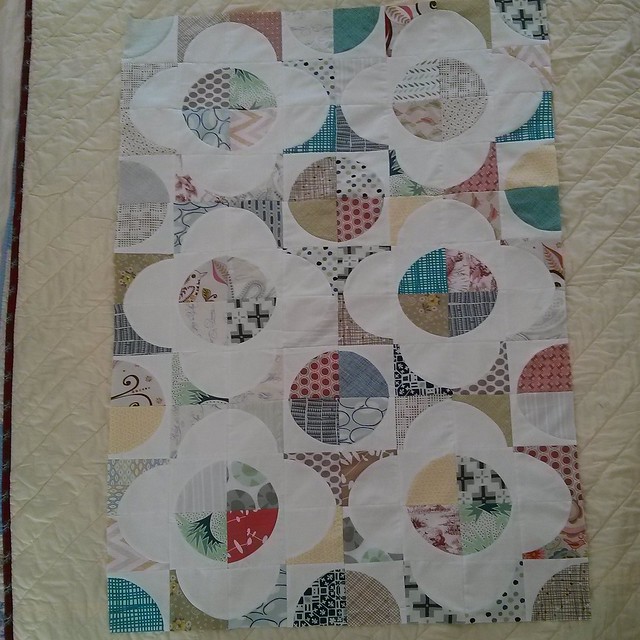Through the Vancouver Modern Quilt Guild and C&T Publishing, I was able to pick a book to review. I chose the "Modern One-Block Quilts" by Natalia Banner and Kathleen Whiting as it sounded like a great book to see what can be done with the traditional idea of repeating the same block to make it modern. This book does that and so much more. It's a great book with amazing quilts that give a Modern spin on repeating the same block.
This book has 22 quilt projects each made from one repeating block. Some of the blocks are very simple and some are very complex.
The book starts with a very short “Sewing Basics” section. There are quick how-tos on making snowballs, half square triangles, and flying geese. The “no waste” flying geese instructions are great. I’ve seen them several times, but never know where to find them when I need it.
Then there’s a short page on “Finishing the Quilt” with a paragraph or two on backing, batting and basting. Binding gets two pages with instructions for making straight and bias binding. A good resource if you need reminding or if you are a new quilter.
There is really no information on quilting or even suggestions of how to quilt each project. But, in the full page pictures of the quilts you can see enough of the quilting on some of them for ideas on how you can finish your own.
Each quilt project starts with a full page picture of the quilt in a lovely setting, then ends with a full page picture of the entire quilt flat.
The instructions include 3 sizes for each quilt and the materials table and cutting table clearly give you requirements for each size. There is also an assembly diagram clearly showing you the layout of the blocks for each size of quilt.
Most of the quilts in the book are made of solids and none of them have borders. The look is really modern and the colours chosen for the pictured quilts are very hip and current. Many of the quilts have a limited palette of 2 colours on a white or cream background. This may sound boring, but the quilts look really
fantastic.
I paged through the book to see if there were any quilts that I would actually want to make as that’s my criteria of a good book. There are 8 quilts that I really like in the book and another 3 that have interesting layouts that I’ll probably incorporate into future quilts. So I can say this book is a winner.
The instructions are clear, well presented. The fabric requirements and cutting directions are laid out in a table, then the sewing instructions are given step by step. I decided to try out the “Squared Scraps” quilt to see what following the instructions are like. The yardage listed is quite generous, so you can make a couple mistakes and still have enough fabric to complete the size of quilt you select.
One minor complaint, they don’t tell you how many strips to cut for each element. For example, for the Squared Scraps quilt, you need 48 pieces of white that are 3 ½ by 9 ½. I wish they would say, “cut 10 3 ½ in strips, width of fabric, then cut them into 9 ½ in sections, each strip yields 4 segments.” That way you’d know how much to cut at once.
The sewing instructions are great and they even suggest what you can sew together before cutting if you want to strip piece some of the elements.
I got the baby size pieced on a Saturday using some hand dyed batics.
I highly recommend this book. It is great for modern quilters and for traditional quilters who want to try something a little more modern. There are so many great quilts in it that are graphic, bold, modern and beautiful. The pictures are amazing, the instructions are clear for each size, and there are quilts that will appeal to all types of quilters.
Beginner quilters can find several amazing quilts that will be within their skill level, and experienced quilters can be challenged by some of the quilts.













































